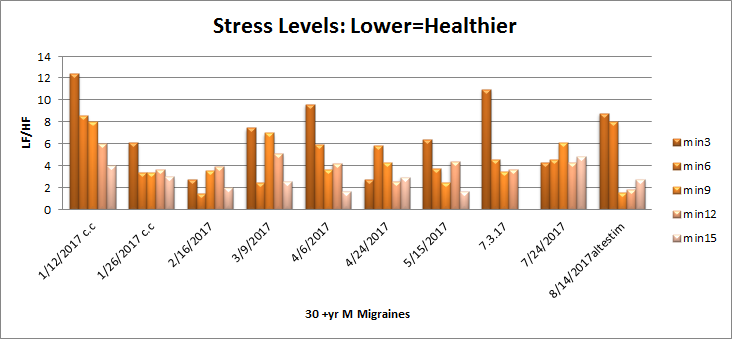Increased Sympathetic Activity in Headache Patients
Kristen Sparrow • August 28, 2017

Autonomic dysregulation in headache patients.
Author information
- 1
- Division of Basic Medical Sciences, Kansas City University of Medicine and Biosciences, 1750 Independence Ave., Kansas City, MO, 64106, USA.
Abstract
To analyze autonomic nervous system activity in headache subjects, measurements of heart rate variability (HRV), skin temperature, skin conductance, and respiration were compared to a matched control group. HRV data were recorded in time and frequency domains. Subjects also completed self-report questionnaires assessing psychological distress, fatigue, and sleep dysfunction. Twenty-one headache and nineteen control subjects participated. In the time domain, the number of consecutive R-to-R intervals that varied by more than 50 ms and the standard deviation of the normalized R-to-R intervals, both indices of parasympathetic nervous system activity, were significantly lower in the headache group than the control group. Groups did not differ statistically on HRV measures in the frequency domain. Self-report measures showed significantly increased somatization, hostility, anxiety, symptom distress, fatigue, and sleep problems in the headache group. The results suggest headache subjects have increased sympathetic nervous system activity and decreased parasympathetic activity compared to non-headache control subjects. Headaches subjects also showed greater emotional distress, fatigue, and sleep problems. The results indicate an association between headaches and cardiovascular functioning suggestive of sympathetic nervous system activation in this sample of mixed migraine and tension-type headache sufferers.



